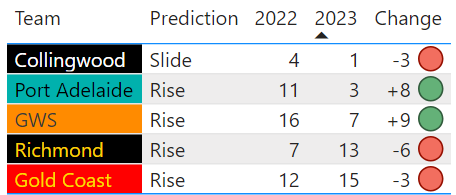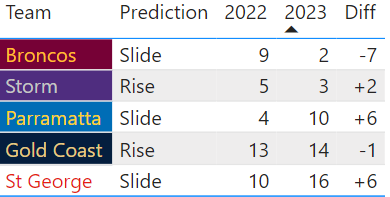Are businesses giving the right opportunities to our skilled migrant population?
Making sense of the Census: Part 1
On a recent journey to a client's office, one of us idly mentioned some tooth pain and a trip to the dentist in the offing. To our surprise, our taxi driver chipped in with some clearly expert questions on the topic of dentistry.
“Had some work done yourself?” we enquired.
“Not really,” he responded. “It’s that back home, I’m a dental nurse.”
Have you ever had this experience? It’s far from a one-off story in Australia – and the data, as always, will back it up. So, being the data enthusiasts we are, we turned to the publicly available Census to investigate this further and what we found was quite interesting.
Down the data rabbit hole
The Australian Census data is collected at regular intervals using different methodologies such as total counts, sample surveys and administrative records. Once generated, Census data is then summarised to represent counts or estimates of groups of people for different geographic areas.
So, we hunted for the relevant section to see what the numbers had to say and built some charts that showed the differences between the education level of Australians and non-Australian immigrant workers and how their language skills impact their earning potential.
Typically speaking, raw numbers alone may often seem one-dimensional and a touch uninspiring at first glance (not to us, but for most people!). However, when you apply data visualisation, data interpretation and data science practices to it, this seemingly one-dimensional data transforms into real insights which emerge in support of better decision-making.
This is even applicable to businesses
At White Box, we are keen advocates of this transformative potential of data and all the value it offers - but you only access that value when you delve deep.
In this series: Making Sense of the Census, we’re going to demonstrate how we take regular data straight from the publicly available Australian Census and apply our techniques to identify stories that unlock powerful, business-ready insights.
Data in Action: the untapped resources behind the language barrier
According to the latest ABS statistics, there are over 7.6 million migrants living in Australia – a number expected to grow as the economy regains its footing after the recent global pandemic.
Records also show that 12% of the Australian workforce are permanent visa-holders while temporary migrants make up 7% of the country’s workforce.
Many migrant workers also have a graduate or postgraduate education when they arrive, and many more gain university-level qualifications during their time in Australia. A quarter of recent migrants have a postgraduate qualification, compared to less than 1 in 10 workers born in Australia.
Given that well over 50% of our team at White Box are migrants, we decided to dig a little deeper into the numbers around skill level and finding the right job.
By using a handful of variables like tertiary education, English-speaking background and income level, we analysed the similarities and differences between locations. We have focused on NSW and set our target on the Sydney metropolitan region, where most migrants choose to live when they arrive in NSW.
Have a look at this image:
As you can see, it doesn’t always matter how highly educated you are. The maps show areas where people with different English-speaking backgrounds but similarly high levels of education predominantly reside in Sydney. At each side are statistics indicating the relative income of those groups. If English isn’t your first language, the data shows you typically earn less than those who are native English speakers.
More than what first meets the eye: the huge workforce divide
The above data paints a not unexpected picture. The reality is that people who are migrating to Australia from overseas where English is not their first language will face challenges to communicate in professional settings.
They could be doctors, engineers or scientists from their home countries but in Australia, their language skills can hold them back from attaining a job that suits their qualifications and skills. And so, as a result, the data shown above indicates that they’re taking lower-paying jobs in order to make a living in a foreign country.
In fact, one of our team members has seen this first hand, with a family friend who arrived in Australia with a medical qualification that was too niche and therefore not recognised here in Australia. He purchased a grocery store and, 20 years later, still owns and operates it.
This pay gap is a result of global migration trends, not just here in Australia but also across the rest of the world. Language is a barrier for many migrants where many often struggle to find relevant jobs that suit their skillset.
So what does it mean for business?
Once you understand that there is a highly skilled workforce like this in Australia who are just not getting the right job opportunities as English is not their first language, more thinking is kickstarted. You can start to form hypotheses, test the data more, and make intelligent business decisions on solid foundations.
For instance:
Is this essentially an untapped talent market? If your company is, or wants to be, an international business, there are opportunities to hire qualified people with multilingual skills, from management and international client service hubs to niche areas like legal or medical translators.
Or in more visually creative fields like design, landscaping and architecture - where success is born of the visual to a greater extent than the written or spoken word - is this an opportunity to explore a more diverse workforce?
Stepping outside the purely commercial side, are there opportunities for your business to get involved with charitable groups, or devise your own indirect support initiatives? Envisage your business as a community leader by way of a positive social influence.
So, beyond the raw and undissected tables of the Census data there’s a wealth of analytical possibility. You can probably now see why it’s such a critical exercise for government policy makers, but it can be more than that. It is actually rich with opportunity that can lead to insights you can use to improve your business operations.
Applying data analytics will get the most out of that information
At White Box, we can help to bring your data to life.
Whether you're looking at Australian Census data or your own data and thinking, “what does this mean?”, our team help you draw out the true insight so that you have business-ready information to make well-informed decisions.
Let’s start a conversation to see how we can empower your team
As your partner in data analytics and visualisation, we’ll help you to realise the full potential of your data and maximise your business success through advanced and innovative solutions that make all the difference.
Get in touch today for your free data strategy consultation.





